Organs of the male body. Male Reproductive System: 7 Key Organs and Their Functions
What are the main components of the male reproductive system. How do hormones regulate male sexual development. Which cells are crucial for sperm production and testosterone synthesis. What role does the Y chromosome play in male differentiation.
The Fundamental Structure of the Male Reproductive System
The male reproductive system is a complex network of organs and structures designed to produce, nourish, and transport sperm for the purpose of fertilization. It also plays a crucial role in the production of male hormones, particularly testosterone, which are essential for male development and sexual characteristics.
The system can be divided into two main categories:
- Internal structures: testes, epididymis, vas deferens, and prostate
- External structures: scrotum and penis
Each of these components has a specific function in the reproductive process and works in harmony with the others to ensure fertility and proper sexual development.

The Testes: Powerhouses of Sperm and Hormone Production
The testes, also known as testicles, are oval-shaped organs located in the scrotum. They serve two primary functions:
- Spermatogenesis: The production of sperm cells
- Hormone production: Primarily testosterone
Within the testes, two types of cells play crucial roles:
- Leydig cells: Found in the interstitium of the testes, these cells produce testosterone
- Sertoli cells: Located in the seminiferous tubules, they support sperm development and form the blood-testis barrier
The testes descend from the abdominal cavity into the scrotum during fetal development, a process essential for maintaining the optimal temperature for sperm production.
Hormonal Regulation of Male Reproduction
The male reproductive system is intricately controlled by a network of hormones that form the hypothalamic-pituitary-gonadal axis. This axis is responsible for the initiation and maintenance of sexual development and function in males.
Key hormones in this system include:

- Gonadotropin-releasing hormone (GnRH): Produced by the hypothalamus
- Follicle-stimulating hormone (FSH) and luteinizing hormone (LH): Released by the anterior pituitary gland
- Testosterone: The primary male sex hormone produced by Leydig cells in the testes
- Inhibin B and Mullerian inhibiting substance (MIS): Produced by Sertoli cells
Is testosterone the only important male hormone? While testosterone is crucial, it can be converted to other significant hormones:
- Dihydrotestosterone (DHT): Converted from testosterone by 5-alpha-reductase, primarily in the prostate
- Estradiol: Converted from testosterone by aromatase, mainly in adipose tissue
These hormones work in concert to regulate various aspects of male sexual development and function, from puberty through adulthood.
The Journey of Sperm: From Production to Ejaculation
The process of sperm production and its journey through the male reproductive system is a fascinating and complex one. It begins in the seminiferous tubules of the testes and ends with ejaculation from the penis.

Spermatogenesis: The Birth of Sperm Cells
Spermatogenesis occurs within the seminiferous tubules of the testes. This process involves several stages:
- Mitotic division of spermatogonia
- Meiotic division to form haploid spermatids
- Differentiation of spermatids into mature spermatozoa
Sertoli cells play a crucial role in this process by providing nutrients and support to the developing sperm cells.
The Epididymis: Sperm Maturation and Storage
After production, sperm cells move into the epididymis, a long, coiled tube attached to the back of each testis. Here, they undergo further maturation and are stored until ejaculation.
The Vas Deferens: Transport of Sperm
During sexual arousal, sperm move from the epididymis through the vas deferens, a muscular tube that connects the epididymis to the urethra.
The Prostate and Seminal Vesicles: Adding Seminal Fluid
As sperm travel through the reproductive tract, they mix with fluids from the prostate gland and seminal vesicles. These fluids provide nutrients and help transport the sperm, forming semen.

The External Male Reproductive Organs
While much of the male reproductive system is internal, two crucial components are external: the scrotum and the penis.
The Scrotum: Nature’s Temperature Regulator
The scrotum is a sac of skin and muscles that houses the testes. Its primary function is to regulate the temperature of the testes, which is crucial for optimal sperm production.
How does the scrotum regulate temperature? It uses two mechanisms:
- The cremaster muscle: Contracts to bring the testes closer to the body for warmth, or relaxes to lower them for cooling
- The dartos muscle: Causes the scrotum to wrinkle, increasing surface area for heat loss
The Penis: Organ of Copulation and Urination
The penis serves dual functions in the male body:
- Sexual function: Delivers sperm into the female reproductive tract during intercourse
- Excretory function: Allows for the expulsion of urine
The penis consists of three main parts:
- The root: Attaches the penis to the pelvic area
- The shaft: The main body of the penis
- The glans: The sensitive tip of the penis, covered by the foreskin in uncircumcised males
Embryonic Development of the Male Reproductive System
The development of the male reproductive system is a complex process that begins early in fetal life and continues through puberty.

What determines male differentiation in embryos? The presence of the Y chromosome, specifically the sex-determining region (SRY) gene, is crucial for male differentiation.
Key stages in male reproductive development include:
- Formation of the testes from the genital ridge
- Production of Mullerian Inhibiting Substance (MIS) by Sertoli cells, causing regression of the Mullerian ducts
- Development of Leydig cells and production of testosterone
- Stimulation of Wolffian duct development by testosterone, forming the epididymis, vas deferens, and seminal vesicles
- Development of external genitalia under the influence of dihydrotestosterone (DHT)
This process sets the stage for further development during puberty and the establishment of male reproductive function in adulthood.
Puberty: The Awakening of the Male Reproductive System
Puberty marks a significant transition in male reproductive development, typically occurring between the ages of 11 and 13.
What triggers the onset of puberty in males? A sudden increase in gonadotropin-releasing hormone (GnRH) from the hypothalamus initiates the process.

Key changes during male puberty include:
- Growth of the testes and scrotum
- Increase in testosterone production
- Development of secondary sexual characteristics (deepening voice, facial and body hair growth)
- Increase in muscle mass and bone density
- Initiation of spermatogenesis
- Growth spurt
These changes are orchestrated by the complex interplay of hormones in the hypothalamic-pituitary-gonadal axis, establishing the foundation for adult male reproductive function.
The Role of Testosterone Beyond Reproduction
While primarily known for its role in male reproductive development and function, testosterone has wide-ranging effects throughout the male body.
How does testosterone influence non-reproductive aspects of male physiology? It affects various systems and processes:
- Skeletal system: Promotes bone density and closes epiphyseal plates at the end of puberty
- Muscular system: Increases muscle mass and strength
- Hematopoietic system: Stimulates red blood cell production (erythropoiesis)
- Integumentary system: Influences male-pattern hair growth and sebaceous gland activity
- Central nervous system: Affects libido, spatial abilities, and certain aspects of behavior
Understanding these diverse effects of testosterone is crucial for comprehending overall male health and development beyond just reproductive function.
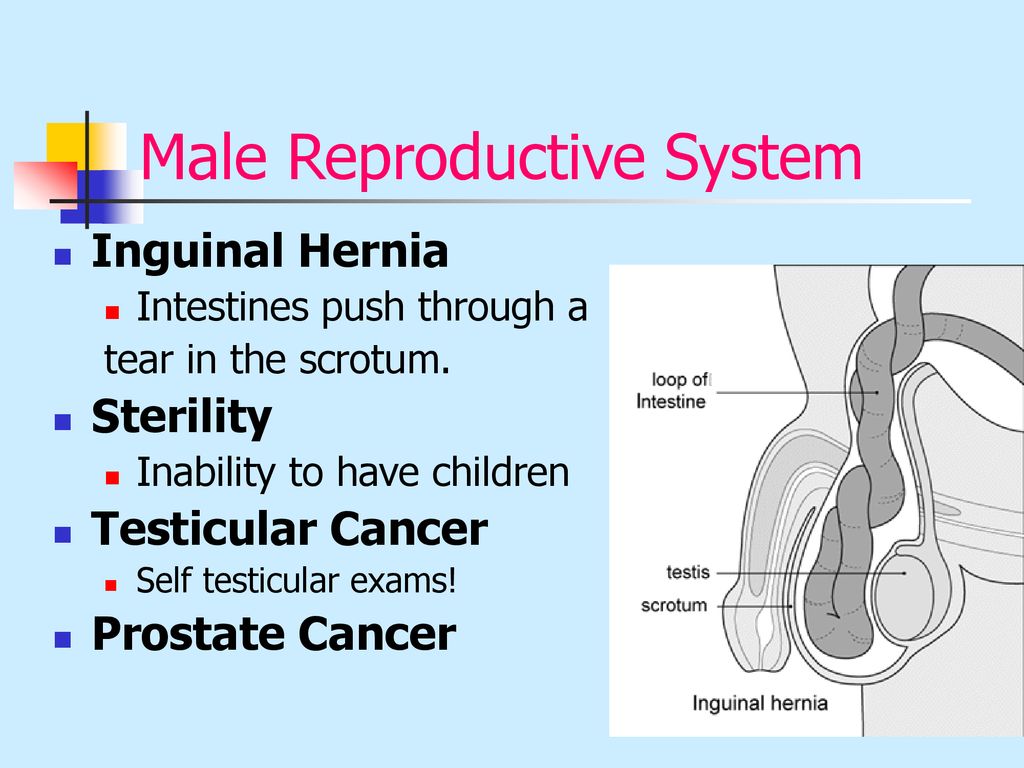
Testosterone Conversion and Its Implications
Testosterone can be converted to other hormones with significant physiological effects:
- Dihydrotestosterone (DHT): Converted from testosterone by 5-alpha-reductase, DHT is more potent than testosterone and is crucial for prostate development and male-pattern hair growth.
- Estradiol: Testosterone can be converted to estradiol by aromatase, primarily in adipose tissue. This conversion plays a role in bone health but can lead to issues if levels become too high.
Can high estradiol levels cause problems in males? Yes, elevated estradiol can lead to several issues:
- Gynecomastia (male breast enlargement)
- Decreased libido
- Infertility
- Increased risk of certain cancers
Maintaining the balance between these hormones is crucial for optimal male health and reproductive function.
Cellular Foundations of Male Reproduction
At the cellular level, the male reproductive system relies on specialized cells to carry out its functions. Two types of cells are particularly important: Leydig cells and Sertoli cells.

Leydig Cells: The Testosterone Factories
Leydig cells are found in the interstitium of the testes, adjacent to the seminiferous tubules. They have several distinctive features:
- Pink cytoplasm on histological examination
- Presence of pink crystals called Reinke crystals
- Primary function of producing testosterone
How does testosterone exert its effects on target tissues? Testosterone acts as a steroid hormone, binding to intracellular receptors in various tissues and regulating protein expression.
Sertoli Cells: The Nurturers of Sperm
Sertoli cells are located in the periphery of the seminiferous tubules and play crucial roles in spermatogenesis:
- Provide physical support and nutrients to developing germ cells
- Form the blood-testis barrier through tight junctions
- Produce inhibin B and Mullerian inhibiting substance (MIS)
Sertoli cells are larger than the surrounding germ cells and have less prominent nuclei. They form a supportive network that guides germ cells as they mature and move towards the lumen of the seminiferous tubules.

Germ Cells: The Precursors of Sperm
Germ cells line the interior of the seminiferous tubules and undergo a complex process of maturation:
- Spermatogonia: The most immature germ cells, located at the periphery of the tubules
- Spermatocytes: Cells undergoing meiosis
- Spermatids: Haploid cells that will develop into mature spermatozoa
- Spermatozoa: Fully mature sperm cells
These cells are characterized by their prominent, dark, and dense nuclei, distinguishing them from the supporting Sertoli cells.
Understanding the cellular foundations of male reproduction provides insight into the intricate processes that enable sperm production and hormone synthesis, ultimately supporting male fertility and overall reproductive health.
Physiology, Male Reproductive System – StatPearls
Introduction
The male reproductive system consists of the internal structures: the testes, epididymis, vas deferens, prostate, and the external structures: the scrotum and penis. These structures are well-vascularized with many glands and ducts to promote the formation, storage, and ejaculation of sperm for fertilization, and to produce important androgens for male development.[1] The major male androgen is testosterone, which is produced from Leydig cells in the testes. Testosterone can be converted in the periphery to a more active form, dihydrotestosterone via 5-alpha-reductase, or estradiol via aromatase. Other key hormones include inhibin B and Mullerian inhibiting substance (MIS) hormone, both produced by the Sertoli cells in the testes. Important hormones that modulate these include follicle-stimulating hormone (FSH) and luteinizing hormone (LH), which are released from the anterior pituitary gland and are regulated by gonadotropin-releasing hormone (GnRH), produced by the hypothalamus. Together, these hormones form the hypothalamic-pituitary-gonadal axis that promotes and maintains sexual development and function in the male.[2]
Together, these hormones form the hypothalamic-pituitary-gonadal axis that promotes and maintains sexual development and function in the male.[2]
Issues of Concern
It is important to note that testosterone can be converted peripherally to estradiol via aromatase from adipose tissue. Estradiol can go on to be converted to estrogen peripherally. Estradiol/estrogen can play a role in bone resorption, epiphyseal closure, gynecomastia, and vascular effects, and exert an inhibitory effect on the hypothalamus and anterior pituitary similar to testosterone. When levels of estradiol increase in males, this can lead to pathological changes such as weak bones, development of breasts and loss of libido or infertility.
Cellular Level
Functional cells of the male reproductive system primarily consist of Leydig and Sertoli cells found in the testes. Leydig cells are found in the interstitium of the testes adjacent to the seminiferous tubules. On histology, they have pink cytoplasm and can be identified by pink crystals of Reinke.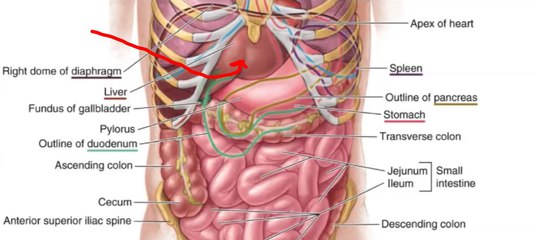 They produce testosterone, a steroid hormone that exerts its effects by binding intracellular receptors of different tissues and regulating protein expression.[3] Sertoli cells are found in the periphery of the seminiferous tubules. They promote spermatogenesis, which begins at the periphery of the tubules. They bind together to form a blood-testis barrier to keep germ cells contained in the seminiferous tubules and connect with each other through tight junctions. These cells are characterized by their relation to germ cells or primitive spermatogonia. Sertoli cells are much larger than germ cells, which are found nearby, and have less prominent nuclei. Germ cells line the interior of the seminiferous tubules and progress toward the lumen as they mature. These cells feature prominent, dark and dense nuclei.[4]
They produce testosterone, a steroid hormone that exerts its effects by binding intracellular receptors of different tissues and regulating protein expression.[3] Sertoli cells are found in the periphery of the seminiferous tubules. They promote spermatogenesis, which begins at the periphery of the tubules. They bind together to form a blood-testis barrier to keep germ cells contained in the seminiferous tubules and connect with each other through tight junctions. These cells are characterized by their relation to germ cells or primitive spermatogonia. Sertoli cells are much larger than germ cells, which are found nearby, and have less prominent nuclei. Germ cells line the interior of the seminiferous tubules and progress toward the lumen as they mature. These cells feature prominent, dark and dense nuclei.[4]
Development
In human embryos, the default sexual differentiation is female. However, having the Y chromosome defines differentiation into the male phenotype and the male reproductive system.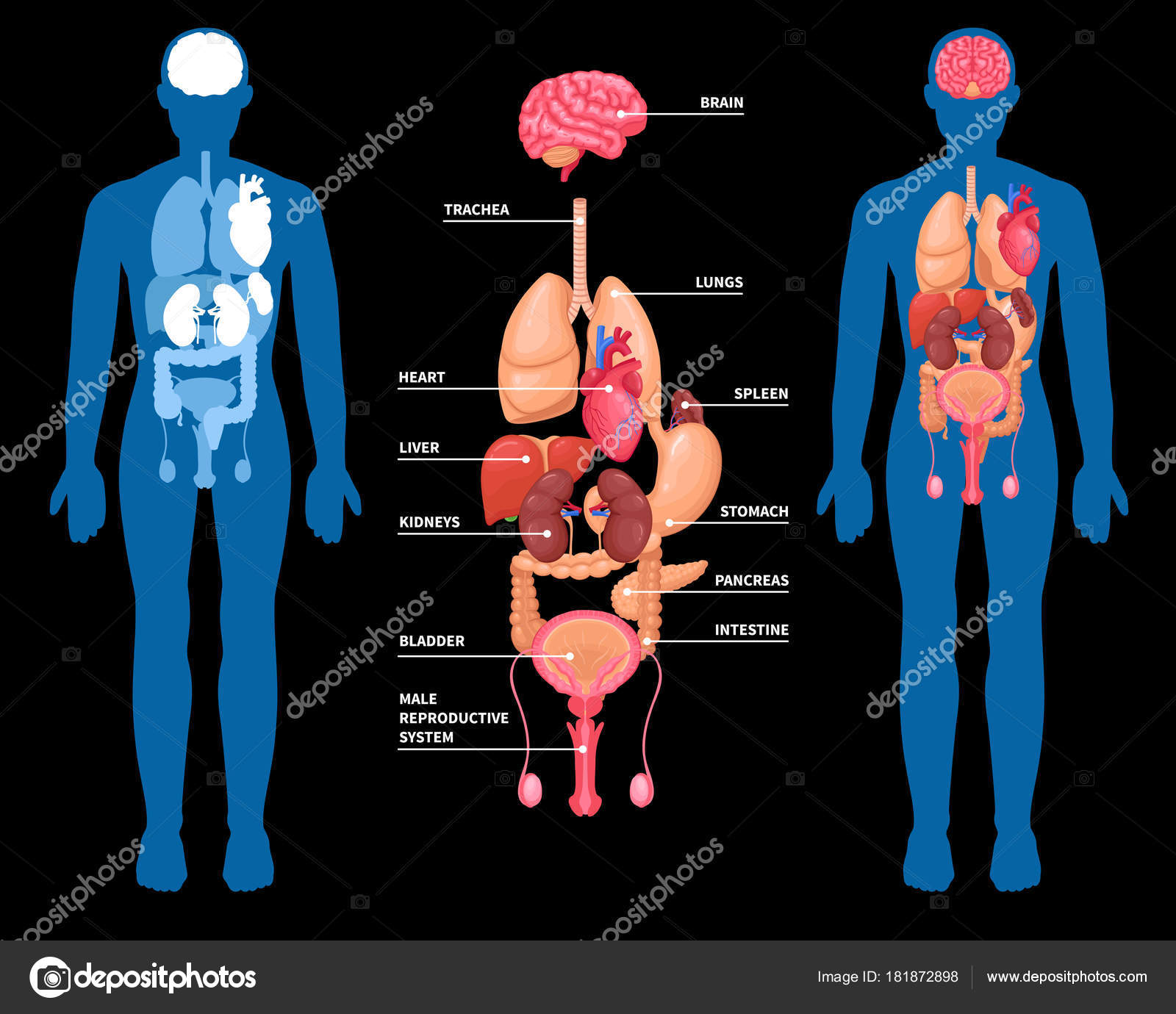 The Y chromosome contains the sex-determining region (SRY) gene, which encodes for development of the testes. The testes descend from the posterior abdominal wall during development to lie in the scrotum at maturity. The testes develop Sertoli cells, which produce MIS to induce regression of the Mullerian ducts, which form the female reproductive tract. The testes also develop Leydig cells that produce testosterone, the major driver of male reproductive development.
The Y chromosome contains the sex-determining region (SRY) gene, which encodes for development of the testes. The testes descend from the posterior abdominal wall during development to lie in the scrotum at maturity. The testes develop Sertoli cells, which produce MIS to induce regression of the Mullerian ducts, which form the female reproductive tract. The testes also develop Leydig cells that produce testosterone, the major driver of male reproductive development.
Testosterone plays an important role in stimulating the development of the Wolffian ducts in the male fetus, which become the testes, epididymis, vas deferens and seminal vesicles. Testosterone is also responsible for erythropoiesis, pubertal growth spurt, bone density, closure of epiphyseal plates, deepening of the voice, increase in muscle mass, male physique development and libido. Additionally, testosterone can be converted to dihydrotestosterone (DHT) via 5-alpha-reductase, an enzyme produced by the prostate peripherally. Both DHT and testosterone bind to the same androgen receptors intracellularly, but DHT has a higher affinity. DHT stimulates the development of the prostate, scrotum, and penis. DHT is also responsible for male hair pattern (facial, axial, and pubic hair), including the pathology of male pattern balding, increased sebaceous gland secretion and acne. Together, these hormones promote puberty and subsequent maintenance of the male reproductive system.[5]
Both DHT and testosterone bind to the same androgen receptors intracellularly, but DHT has a higher affinity. DHT stimulates the development of the prostate, scrotum, and penis. DHT is also responsible for male hair pattern (facial, axial, and pubic hair), including the pathology of male pattern balding, increased sebaceous gland secretion and acne. Together, these hormones promote puberty and subsequent maintenance of the male reproductive system.[5]
Typically, the growth of the testes marks the beginning of puberty in males, which occur between 11 to 13 years of age. This is stimulated by a sudden rise in GnRH from the hypothalamus, which stimulates FSH and LH release from the anterior pituitary. LH stimulates Leydig cells to increase testosterone, which causes growth and pigmentation of the scrotum and penis. Secondary sexual characteristics such as facial, axillary, chest and pubic hair growth, deepening of the voice and growth spurt occur next. At this stage, first fertile ejaculations appear, marking mature reproductive function. Eventually, the epiphyseal growth plates close, marking the end of pubertal development. Pubertal development can continue into a male’s 20s.
Eventually, the epiphyseal growth plates close, marking the end of pubertal development. Pubertal development can continue into a male’s 20s.
Organ Systems Involved
The hypothalamic-pituitary-gonadal axis plays a major role in promoting sexual maturity, sperm production and the development of secondary sex characteristics. It maintains spermatogenesis and sexual function throughout the male’s lifetime. The hypothalamus secretes GnRH into the hypothalamo-hypophyseal portal system to stimulate the anterior pituitary. GnRH is a peptide hormone released by hypothalamic neurons in a pulsatile fashion. It acts on the gonadotrophs of the anterior pituitary via the binding and activation of a G protein receptor, which stimulates the anterior pituitary through inositol 1,4,5-triphosphate (IP3) activation (which increases intracellular calcium) to release FSH and LH. GnRH is inhibited by testosterone, estrogen, estradiol, and prolactin.[2]
In response, the anterior pituitary secretes LH and FSH into the blood. These gonadotropic hormones act on membrane receptors in the Leydig and Sertoli cells of the testes respectively. Both hormones come from the same glycoprotein family and consist of identical alpha subunits, but their different beta-subunit differentiates their functions. Both exert their physiologic effects by binding and activating a G protein receptor, which activates adenylyl cyclase and increases cellular cAMP levels, to stimulate Sertoli and Leydig cells. LH stimulates Leydig cells in the interstitium of the testes to produce testosterone from cholesterol. LH promotes desmolase, which is the initial rate-limiting enzyme that converts cholesterol into pregnenolone. This goes on to produce two key weak androgen intermediates: dehydroepiandrosterone (DHEA) and androstenedione. The enzyme 17-beta-hydroxysteroid dehydrogenase completes the conversion of androstenedione to testosterone. Testosterone acts on the hypothalamus and anterior pituitary via negative feedback to decrease the secretion of LH and FSH.
These gonadotropic hormones act on membrane receptors in the Leydig and Sertoli cells of the testes respectively. Both hormones come from the same glycoprotein family and consist of identical alpha subunits, but their different beta-subunit differentiates their functions. Both exert their physiologic effects by binding and activating a G protein receptor, which activates adenylyl cyclase and increases cellular cAMP levels, to stimulate Sertoli and Leydig cells. LH stimulates Leydig cells in the interstitium of the testes to produce testosterone from cholesterol. LH promotes desmolase, which is the initial rate-limiting enzyme that converts cholesterol into pregnenolone. This goes on to produce two key weak androgen intermediates: dehydroepiandrosterone (DHEA) and androstenedione. The enzyme 17-beta-hydroxysteroid dehydrogenase completes the conversion of androstenedione to testosterone. Testosterone acts on the hypothalamus and anterior pituitary via negative feedback to decrease the secretion of LH and FSH. Testosterone can also exert some effect on Sertoli cells, found in the periphery of the seminiferous tubules of testes. FSH and testosterone can stimulate Sertoli cells to release androgen-binding protein (ABP), which provides testosterone to germ cells during spermatogenesis. FSH stimulates Sertoli cells to promote sperm production and release inhibin B and MIS. Inhibin serves as the negative feedback control that Sertoli cells exert on the hypothalamic-pituitary system to decrease FSH release.[6]
Testosterone can also exert some effect on Sertoli cells, found in the periphery of the seminiferous tubules of testes. FSH and testosterone can stimulate Sertoli cells to release androgen-binding protein (ABP), which provides testosterone to germ cells during spermatogenesis. FSH stimulates Sertoli cells to promote sperm production and release inhibin B and MIS. Inhibin serves as the negative feedback control that Sertoli cells exert on the hypothalamic-pituitary system to decrease FSH release.[6]
Before puberty, the levels of androgens and gonadotropins typically remain low and constant. Once puberty occurs, the hypothalamus releases GnRH in a pulsatile fashion every one to two hours to maintain amounts of FSH, LH and plasma testosterone, all of which regulate each other to maintain hormonal balance. In the third decade of life, testosterone levels are found to decline.[2][5][7]
Although a majority of testosterone production in men come from the Leydig cells in testes, the adrenal cortex contributes some androgen production.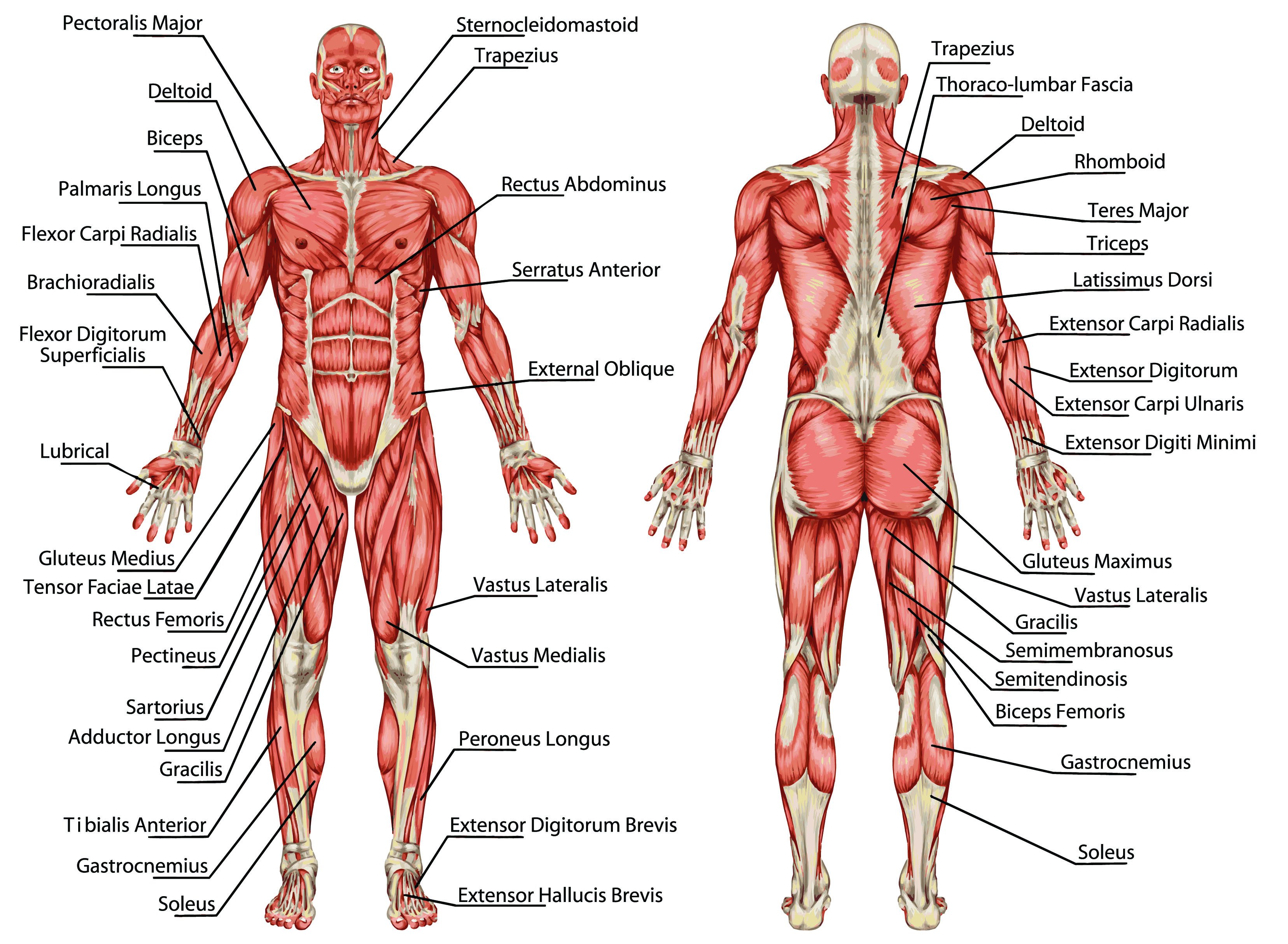 Similar to the hypothalamic-pituitary-gonadal axis, the adrenal glands are also controlled by the hypothalamus and anterior pituitary to form the hypothalamic-pituitary-adrenal axis. The hypothalamus release corticotrophin-releasing hormone (CRH), which stimulates the release of adrenocorticotropic hormone (ACTH) from the anterior pituitary. ACTH stimulates the enzyme desmolase to convert cholesterol into pregnenolone in the adrenals, similar to testosterone synthesis in the testes. Specifically, the zona reticularis of the adrenal medulla is responsible for generating the weak androgens DHEA and androstenedione, which go on to be converted to testosterone or estradiol peripherally.[2]
Similar to the hypothalamic-pituitary-gonadal axis, the adrenal glands are also controlled by the hypothalamus and anterior pituitary to form the hypothalamic-pituitary-adrenal axis. The hypothalamus release corticotrophin-releasing hormone (CRH), which stimulates the release of adrenocorticotropic hormone (ACTH) from the anterior pituitary. ACTH stimulates the enzyme desmolase to convert cholesterol into pregnenolone in the adrenals, similar to testosterone synthesis in the testes. Specifically, the zona reticularis of the adrenal medulla is responsible for generating the weak androgens DHEA and androstenedione, which go on to be converted to testosterone or estradiol peripherally.[2]
Function
The function of the male reproductive system is to produce androgens such as testosterone that maintain male reproductive function and to promote spermatogenesis and transport into the female reproductive system for fertilization. The testes act as both endocrine and exocrine organs in that they are responsible for androgen production and sperm production and transport.
Mechanism
Spermatogenesis starts at puberty with the germ cells found in the basement membrane of the seminiferous tubules of the testes. Sertoli cells stimulated by FSH help regulate spermatogenesis. One cycle of spermatogenesis begins approximately every 13 days; however, spermatogenesis is not consistently synchronous throughout all seminiferous tubules. The first stage of spermatogenesis begins with mitosis of diploid spermatogonia into primary spermatocytes. These spermatocytes undergo meiosis I to produce haploid secondary spermatocytes, which undergo meiosis II to form haploid spermatids. The most primitive spermatocytes are found peripherally in the seminiferous tubules and mature by migrating towards the lumen. Spermatids transform into spermatozoa by reducing cytoplasm. These spermatozoa are still immotile and are released into the tubules to travel to the epididymis for maturation. The epididymis is a coiled structure consisting of a head, body, and tail. The tail eventually joins with the vas deferens, providing an outlet for mature sperms to ejaculate.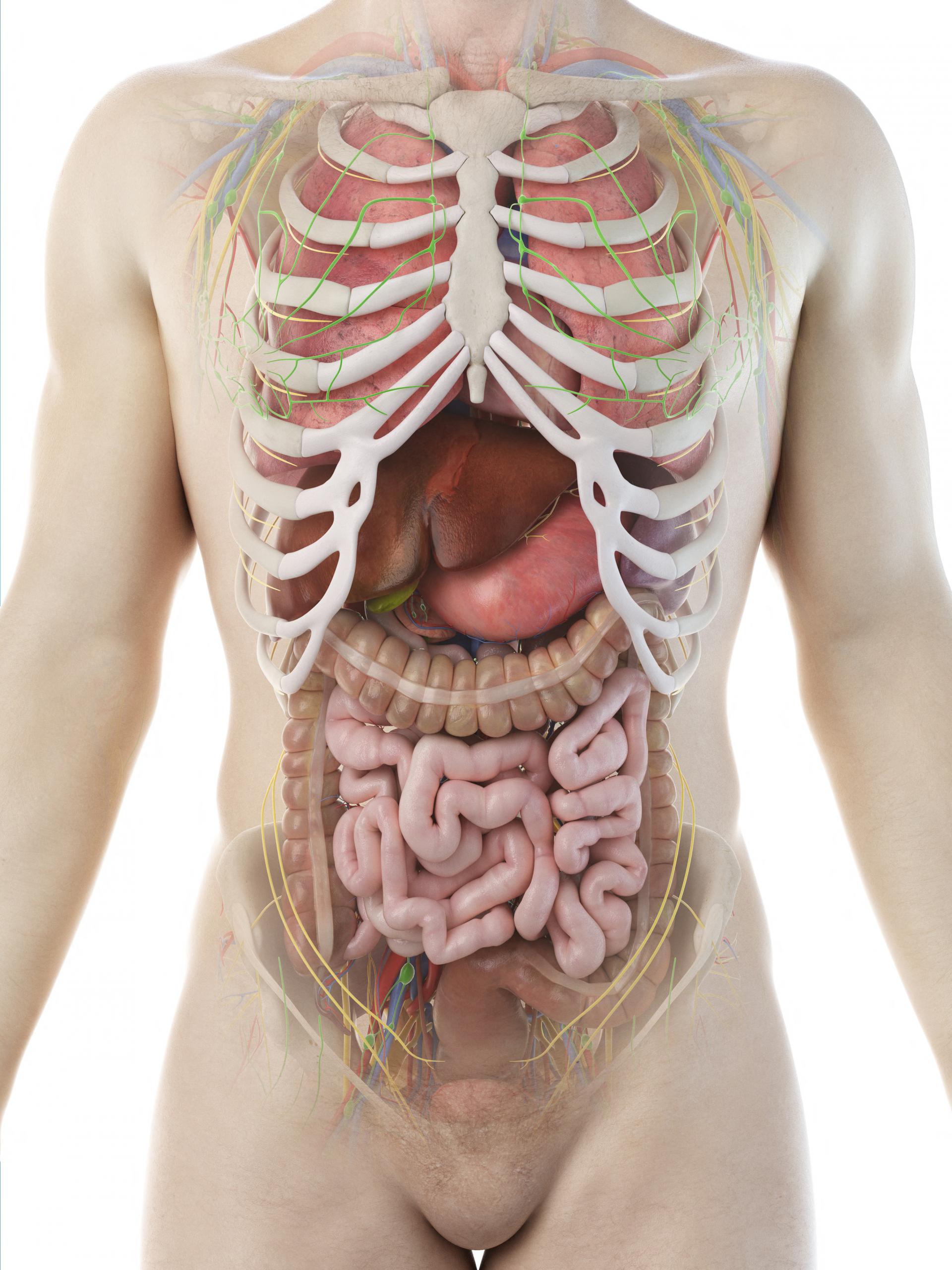 In the epididymis, the sperm takes about twelve days to mature and develop motility. They are then stored in the tail of the epididymis until ejaculation occurs. A mature sperm consists of a head, midpiece, and tail. The head contains the nucleus with very little cytoplasm. An acrosome or cap covers the head and is filled with lysosomes, which aids with fertilization. The midpiece contains abundant mitochondria to provide energy for the flagellum or tail of the sperm.
In the epididymis, the sperm takes about twelve days to mature and develop motility. They are then stored in the tail of the epididymis until ejaculation occurs. A mature sperm consists of a head, midpiece, and tail. The head contains the nucleus with very little cytoplasm. An acrosome or cap covers the head and is filled with lysosomes, which aids with fertilization. The midpiece contains abundant mitochondria to provide energy for the flagellum or tail of the sperm.
During sexual arousal (physical or psychological), vasodilation brings blood to the penis. The penis contains corpora cavernosa and a corpus spongiosum where blood flows along to enlarge and erect the penis. As sexual stimulation continues, blood continues to flow to the genitals, and the testes enlarge in preparation of ejaculation.
When ejaculation occurs, smooth muscle contractions of the epididymis pushes sperm into the ductus deferens (vas deferens), which sits in the spermatic cord. The ductus deferens delivers the sperm to ejaculatory duct by joining with the seminal vesicle duct near the prostate.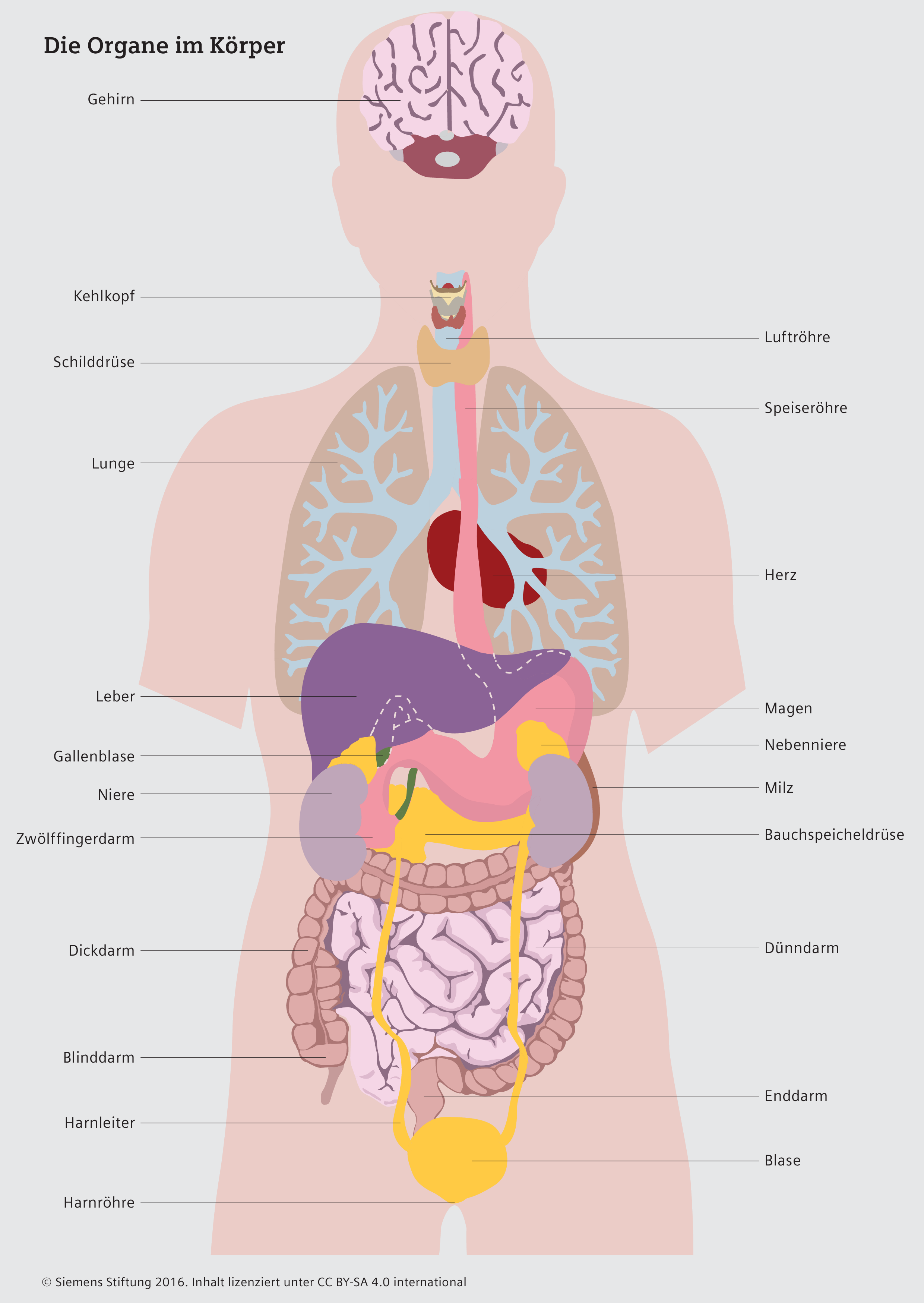 The seminal vesicles produce fructose, which provides the energy for sperm motility. It is released within a fluid that mixes with the sperm to form semen. Once in the ejaculatory duct, the semen passes through the prostate, which secretes an alkaline fluid that helps thicken the semen so sperm can better stay within the female reproductive system. The semen then passes the bulbourethral glands or Cowper’s glands, which release a thick fluid that lubricates the urethral opening and clears the urethra of any urine residue. The semen then can enter the female vaginal canal, allowing the sperm to travel to and fertilize a potential egg within the female reproductive system.[2][6][8]
The seminal vesicles produce fructose, which provides the energy for sperm motility. It is released within a fluid that mixes with the sperm to form semen. Once in the ejaculatory duct, the semen passes through the prostate, which secretes an alkaline fluid that helps thicken the semen so sperm can better stay within the female reproductive system. The semen then passes the bulbourethral glands or Cowper’s glands, which release a thick fluid that lubricates the urethral opening and clears the urethra of any urine residue. The semen then can enter the female vaginal canal, allowing the sperm to travel to and fertilize a potential egg within the female reproductive system.[2][6][8]
Related Testing
Common tests of male reproductive function include a blood test to measure testosterone levels. A majority of testosterone is bound to plasma proteins, particularly sex-hormone-binding globulins (SHBGs), which serve as storage. Some testosterone is also bound to albumin, which serves as a transporter. Only a small amount of testosterone circulates freely in plasma (normal range: 50 to 210 pg/mL). Total testosterone ranges from 300 to 1000 ng/mL.[9] Other tests include semen analysis, which establishes fertility status and function of the seminiferous tubules, epididymis, and accessory sex glands.[10] A sperm sample is collected and examined microscopically for count, motility, and shape. It can be useful in diagnosing cases of infertility or success of a vasectomy. Normal sperm counts are typically greater than 15 million/mL and motility greater than 40%. Other tests include blood prostate-specific antigen test (PSA), which screens for prostate cancer. The prostate produces PSA typically, and levels can rise in prostatic carcinoma.[11] Recommendations for screening vary but typically screening should start around 50 years of age. A PSA greater than 4 ng/mL may prompt prostatic biopsy to rule out prostatic carcinoma. Physical exams include the digital rectal examination, which helps identify structural changes in prostate size such as benign prostatic hyperplasia, which is common in older men and can lead to urinary difficulties.
Only a small amount of testosterone circulates freely in plasma (normal range: 50 to 210 pg/mL). Total testosterone ranges from 300 to 1000 ng/mL.[9] Other tests include semen analysis, which establishes fertility status and function of the seminiferous tubules, epididymis, and accessory sex glands.[10] A sperm sample is collected and examined microscopically for count, motility, and shape. It can be useful in diagnosing cases of infertility or success of a vasectomy. Normal sperm counts are typically greater than 15 million/mL and motility greater than 40%. Other tests include blood prostate-specific antigen test (PSA), which screens for prostate cancer. The prostate produces PSA typically, and levels can rise in prostatic carcinoma.[11] Recommendations for screening vary but typically screening should start around 50 years of age. A PSA greater than 4 ng/mL may prompt prostatic biopsy to rule out prostatic carcinoma. Physical exams include the digital rectal examination, which helps identify structural changes in prostate size such as benign prostatic hyperplasia, which is common in older men and can lead to urinary difficulties.
Pathophysiology
An imbalance in the hypothalamic-pituitary-gonadal axis can result in infertility and hypogonadism. Primary hypogonadism (also referred to as hypergonadotropic hypogonadism) results from a gonadal failure to produce adequate testosterone or spermatogenesis despite high LH and FSH levels. Congenital causes of primary hypogonadism include Klinefelter syndrome, androgen synthesis disorder, or cryptorchidism. Acquired causes include hepatic cirrhosis, renal failure, drugs, autoimmune disease, irradiation, infections, trauma or commonly, age. These result in failure of the testes to develop properly, injury to the testes or impaired function. Hence, loss of testicular function results in damaged or underdeveloped Leydig or Sertoli cells that cannot respond to stimuli to maintain reproductive function.
Secondary hypogonadism results from a disruption in the hypothalamic-pituitary axis where low GnRH, LH or FSH leads to low testosterone and spermatogenesis.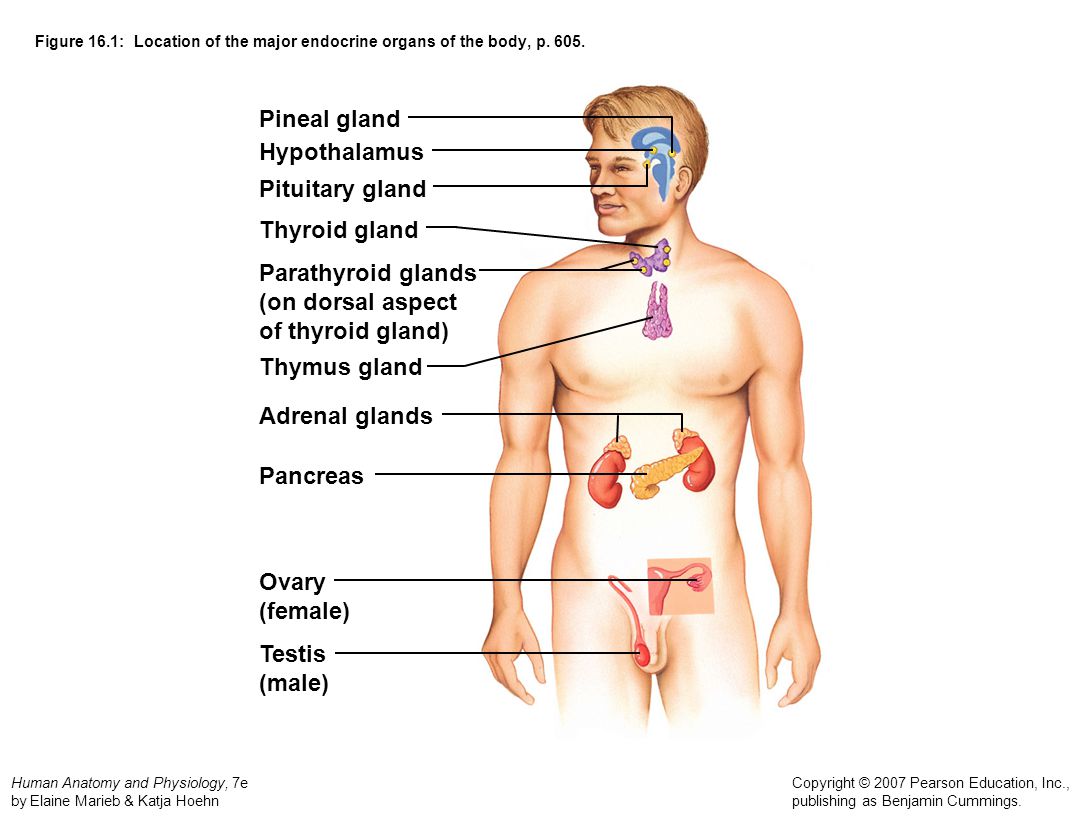 These disorders can arise from congenital isolated GnRH, LH or FSH deficiency (such as in Kallmann’s, Prader-Willi, Lawrence-Moon, GnRH receptor mutations, beta-subunit mutations in LH or FSH, or the kisspeptin/G protein-coupled receptor fifty-four mutations, which play a role in GnRH release). Acquired causes notably include hyperprolactinemia, panhypopituitarism, drugs (i.e., steroid use or opiates), systemic diseases, tumors, infection, trauma or irradiation. Notably, hyperprolactinemia can suppress GnRH release and is commonly due to prolactinomas, but can also result from hypothalamic-pituitary stalk lesions, drugs (dopamine antagonists, psychotropic agents, etc.) or systemic diseases.[8][12][13][14] These diseases result in loss of the primary stimuli to the testes. Without the proper stimuli (GnRH, LH, or FSH), the Leydig and Sertoli cells, which are functional and intact, cannot exert their effects. This results in low testosterone levels or loss of spermatogenesis.
These disorders can arise from congenital isolated GnRH, LH or FSH deficiency (such as in Kallmann’s, Prader-Willi, Lawrence-Moon, GnRH receptor mutations, beta-subunit mutations in LH or FSH, or the kisspeptin/G protein-coupled receptor fifty-four mutations, which play a role in GnRH release). Acquired causes notably include hyperprolactinemia, panhypopituitarism, drugs (i.e., steroid use or opiates), systemic diseases, tumors, infection, trauma or irradiation. Notably, hyperprolactinemia can suppress GnRH release and is commonly due to prolactinomas, but can also result from hypothalamic-pituitary stalk lesions, drugs (dopamine antagonists, psychotropic agents, etc.) or systemic diseases.[8][12][13][14] These diseases result in loss of the primary stimuli to the testes. Without the proper stimuli (GnRH, LH, or FSH), the Leydig and Sertoli cells, which are functional and intact, cannot exert their effects. This results in low testosterone levels or loss of spermatogenesis.
Other causes of infertility in men include defects in androgen action, hyper/hypothyroidism, adrenal insufficiency, congenital adrenal hyperplasia, disordered sperm transport (i. e., ductal obstruction), and systemic disease. Defects in androgen action, such as androgen insensitivity syndrome, result in a female phenotype despite male genotype due to an inability of the body’s tissues to respond to testosterone. Hence, despite high testosterone levels in circulation, the clinical presentation is that of a patient with low testosterone and typically female as the disorder arises from birth.
e., ductal obstruction), and systemic disease. Defects in androgen action, such as androgen insensitivity syndrome, result in a female phenotype despite male genotype due to an inability of the body’s tissues to respond to testosterone. Hence, despite high testosterone levels in circulation, the clinical presentation is that of a patient with low testosterone and typically female as the disorder arises from birth.
Clinical Significance
Disorders of the male reproductive system typically result from decreased testosterone levels or insensitivity to testosterone, which lead to low libido, failure to ejaculate, decrease in bone density, muscle loss, infertility, loss of body hair and, importantly, incomplete sexual development if the disorder is congenital or acquired before puberty. Other less specific symptoms of low testosterone include low energy/depressed mood, anemia or increased body fat. Other comorbidities associated with low testosterone include metabolic syndrome, insulin resistance, and atherosclerosis,[14][9]
Review Questions
Access free multiple choice questions on this topic.

Comment on this article.
References
- 1.
Tiwana MS, Leslie SW. StatPearls [Internet]. StatPearls Publishing; Treasure Island (FL): Jul 25, 2022. Anatomy, Abdomen and Pelvis: Testicle. [PubMed: 29261881]
- 2.
Mawhinney M, Mariotti A. Physiology, pathology and pharmacology of the male reproductive system. Periodontol 2000. 2013 Feb;61(1):232-51. [PubMed: 23240952]
- 3.
Al-Agha OM, Axiotis CA. An in-depth look at Leydig cell tumor of the testis. Arch Pathol Lab Med. 2007 Feb;131(2):311-7. [PubMed: 17284120]
- 4.
Dimitriadis F, Tsiampali C, Chaliasos N, Tsounapi P, Takenaka A, Sofikitis N. The Sertoli cell as the orchestra conductor of spermatogenesis: spermatogenic cells dance to the tune of testosterone. Hormones (Athens). 2015 Oct-Dec;14(4):479-503. [PubMed: 26732153]
- 5.
Nassar GN, Leslie SW. StatPearls [Internet]. StatPearls Publishing; Treasure Island (FL): Jan 2, 2023.
 Physiology, Testosterone. [PubMed: 30252384]
Physiology, Testosterone. [PubMed: 30252384]- 6.
Heindel JJ, Treinen KA. Physiology of the male reproductive system: endocrine, paracrine and autocrine regulation. Toxicol Pathol. 1989;17(2):411-45. [PubMed: 2675292]
- 7.
Basaria S. Male hypogonadism. Lancet. 2014 Apr 05;383(9924):1250-63. [PubMed: 24119423]
- 8.
Plant TM, Marshall GR. The functional significance of FSH in spermatogenesis and the control of its secretion in male primates. Endocr Rev. 2001 Dec;22(6):764-86. [PubMed: 11739331]
- 9.
Lee OD, Tillman K. An Overview of Testosterone Therapy. Am J Mens Health. 2016 Jan;10(1):68-72. [PubMed: 25398416]
- 10.
Esteves SC. Clinical relevance of routine semen analysis and controversies surrounding the 2010 World Health Organization criteria for semen examination. Int Braz J Urol. 2014 Jul-Aug;40(4):443-53. [PubMed: 25254609]
- 11.
Robinson JG, Hodges EA, Davison J.
 Prostate-specific antigen screening: a critical review of current research and guidelines. J Am Assoc Nurse Pract. 2014 Oct;26(10):574-81. [PubMed: 24399687]
Prostate-specific antigen screening: a critical review of current research and guidelines. J Am Assoc Nurse Pract. 2014 Oct;26(10):574-81. [PubMed: 24399687]- 12.
Bonomi M, Rochira V, Pasquali D, Balercia G, Jannini EA, Ferlin A., Klinefelter ItaliaN Group (KING). Klinefelter syndrome (KS): genetics, clinical phenotype and hypogonadism. J Endocrinol Invest. 2017 Feb;40(2):123-134. [PMC free article: PMC5269463] [PubMed: 27644703]
- 13.
Trevisan CM, Montagna E, de Oliveira R, Christofolini DM, Barbosa CP, Crandall KA, Bianco B. Kisspeptin/GPR54 System: What Do We Know About Its Role in Human Reproduction? Cell Physiol Biochem. 2018;49(4):1259-1276. [PubMed: 30205368]
- 14.
Ross A, Bhasin S. Hypogonadism: Its Prevalence and Diagnosis. Urol Clin North Am. 2016 May;43(2):163-76. [PubMed: 27132573]
Disclosure: Purnima Gurung declares no relevant financial relationships with ineligible companies.

Disclosure: Ekrem Yetiskul declares no relevant financial relationships with ineligible companies.
Disclosure: Ishwarlal Jialal declares no relevant financial relationships with ineligible companies.
26.3A: Anatomy of the Male Reproductive System
- Last updated
- Save as PDF
- Page ID
- 8236
The male reproductive system includes external (penis, scrotum, epididymus, and testes) and internal (accessory) organs.
Learning Objectives
- Distinguish among the parts and functions of the male reproductive system
Key Points
- The functions of the male reproductive system include producing and transporting sperm, ejaculating sperm into the female reproductive tract, and producing and secreting male hormones.

- Most of the male reproductive system is located outside of the body. These external structures are the penis, scrotum, epididymis, and testes.
- The internal organs of the male reproductive system are called accessory organs. They include the vas deferens, seminal vesicles, prostate gland, and bulbourethral glands.
Key Terms
- semen: Contains spermatozoa, proteolytic and other enzymes, and
fructose that promotes spermatozoa survival. It also provides a medium for sperm
motility. - spermatogenesis: The process of sperm production within the seminiferous tubules in the testes.
- testosterone: Steroid hormone produced primarily in the male testes and responsible for the development of male secondary sex characteristics.
The organs of the male reproductive system are specialized for three primary functions:
- To produce, maintain, transport, and nourish sperm (the male reproductive cells), and protective fluid ( semen ).

- To discharge sperm within the female reproductive tract.
- To produce and secrete male sex hormones.
External Male Sex Organs
Most of the male reproductive system is located outside of the man’s body. These external structures are the penis, scrotum, epididymis, and testes.
Male Reproductive System: Lateral view of male reproductive system with organs labeled.
The penis is the male organ for sexual intercourse and urination. Semen and urine leave the penis through the urethra. The scrotum is a loose, pouch-like sack of skin that hangs behind the penis, containing the testes.
The scrotum has a protective function, including the maintenance of optimal temperatures for sperm survival and function. For sperm development, the testes must maintain a temperature slightly cooler than normal body temperature. Special muscles in the wall of the scrotum contract and relax in order to move the testes near the body.
The epididymus is located at the back of the testis and connects it to the vas deferens. Its function is to store and carry sperm. The testis is the location for testosterone production. The coiled collection of tubes within the testes are the seminiferous tubules. Within these tubules, spermatogenesis takes place.
Accessory Sex Organs
The internal organs of the male reproductive system are called accessory organs. They include the vas deferens, seminal vesicles, prostate gland, and bulbourethral (Cowper’s) glands.
- Vas deferens: Transports mature sperm to the urethra in preparation for ejaculation.
- Seminal vesicles: Sac-like pouches that attach to the vas deferens near the base of the bladder. The vesicles produce molecules such as fructose that serve as energy sources for sperm. The seminal vesicle fluid makes up most of the volume of a man’s ejaculate.
- Prostate gland: A walnut-sized structure located below the urinary bladder in front of the rectum.
 It contributes additional fluid to the ejaculate that serves as nourishment for sperm.
It contributes additional fluid to the ejaculate that serves as nourishment for sperm. - Bulbourethral (Cowper’s) glands: Pea-sized structures located on the sides of the urethra just below the prostate gland. These glands produce a clear, slippery fluid that empties directly into the urethra. Fluid produced by these glands lubricates the urethra and neutralizes acidity associated with residual urine.
- Back to top
- Was this article helpful?
- Article type
- Section or Page
- License
- CC BY-SA
- Show TOC
- no
- Tags

Structure and function of the male genital organs
Home » Urologist, andrologist » Structure and function of the male genital organs
The male reproductive system is represented by external and internal genital organs. The external genital organs of a man include the penis (Penis) and testicles (Testis), located in the scrotum. The internal male genital organs include the prostate gland, seminal vesicles, and vas deferens.
Male external genitalia.
Penis (penis) . The penis consists of the so-called root, shaft and glans. The head of the penis is covered by a skin fold – the foreskin. The slit-like cavity between the head and the foreskin is called the preputial sac (Prepucium). Normally, the foreskin should move freely and expose the head of the penis.
Under the thin skin of the penis there are right and left cavernous (cavernous) bodies , below them is urethra (urethra) .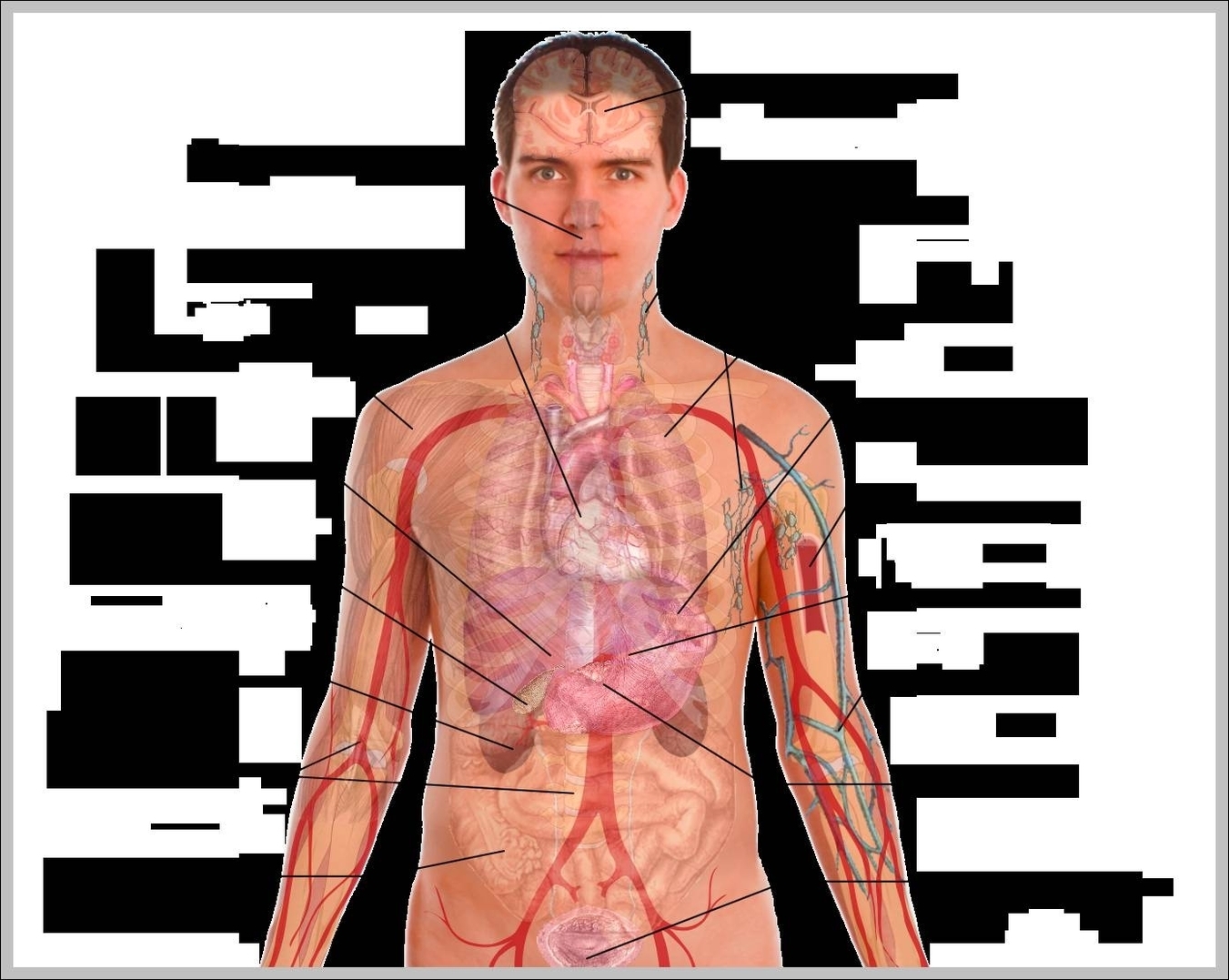 Around the urethra is spongy (spongiform) body . Cavernous bodies are enclosed in a strong, almost inextensible protein membrane.
Around the urethra is spongy (spongiform) body . Cavernous bodies are enclosed in a strong, almost inextensible protein membrane.
In the glans penis and in the foreskin there is a large number of sensitive nerve endings, adequate stimulation of which is accompanied by excitation of the corresponding nerve centers in the spinal cord and brain. Visual, auditory, olfactory stimuli, mental images can also cause excitation of the nerve centers responsible for erection. As a result of the launch of erection mechanisms, the flow of arterial blood to the cavernous bodies of the penis increases several times, and due to valve mechanisms, venous outflow practically stops during erection.
Testicles . In the testicles, spermatozoa are produced and mature (spermatogenesis occurs). The testicles also produce the male sex hormone, testosterone.
The testicles are located in the scrotum (Scrotum), which performs a thermoregulatory function to ensure normal spermatogenesis and maintain male fertility (fertility). The temperature of the scrotum is approximately two degrees below the axillary (axillary) and is about 34.5 ° C. Under conditions of overheating of the body, the cremasteric muscles lower the testicles, while the skin of the scrotum is significantly stretched, increasing heat transfer. In cold conditions, the testicles are pulled up to the root of the scrotum; the skin of the latter at the same time is reduced, saving a stable temperature of the testicles.
The temperature of the scrotum is approximately two degrees below the axillary (axillary) and is about 34.5 ° C. Under conditions of overheating of the body, the cremasteric muscles lower the testicles, while the skin of the scrotum is significantly stretched, increasing heat transfer. In cold conditions, the testicles are pulled up to the root of the scrotum; the skin of the latter at the same time is reduced, saving a stable temperature of the testicles.
Fig. The structure of the male reproductive organs.
Male internal genital organs.
Prostate (prostate). The prostate is a gland that produces a secret (prostate juice) that is released during ejaculation and makes up a significant part of the semen volume. In addition, the prostate is the main organ where testosterone (male sex hormone) is metabolized. The prostate is located under the neck of the bladder, through it passes the initial section of the urethra (prostatic urethra).
Seminal vesicles . The seminal vesicles are paired organs located on either side of the upper lateral surfaces of the prostate, just below the bladder. The secret secreted by the seminal vesicles makes up the bulk of the semen volume.
Spermatic cords . The spermatic cord is a paired organ, in which blood vessels and nerves go to the testicle, as well as the vas deferens . Male sex gametes (spermatozoa) are formed in the testis, mature in the epididymis, then through the vas deferens enter the seminal vesicles, where they mix with the liquid of the latter. During ejaculation, the secret of the seminal vesicles enters the prostatic urethra, where, mixing with the secret of the prostate, it rapidly moves outward through the urethra. The muscles of the perineum are actively involved in the act of ejaculation.
All the myths and scientific facts about the male body
The size of manhood can be judged by the size of the legs, the penis cannot be broken, men are smarter than women, but they are worse at multitasking and genetically simpler, and even worse they distinguish colors and “think about sex every seven minutes. ” Which of these is a fact confirmed by research, and which is utter nonsense? TechInsider has laid out all this and much more strictly on scientific shelves so that there is no more confusion.
” Which of these is a fact confirmed by research, and which is utter nonsense? TechInsider has laid out all this and much more strictly on scientific shelves so that there is no more confusion.
Tags:
Netlenka
Study
Biology
Food
Brain
Wikipedia
Men are simpler than women. . To prevent serious conflicts with the X chromosome, the male Y chromosome was forced to “turn off” many genes that currently do not encode any proteins. For 300 million years of continuous arms race with the X chromosome, the Y chromosome has lost 139 from the original 14383 genes. If you don’t understand anything, then remember one thing: men, purely physically, have fewer genes.
In terms of recognizing colors, tastes and sounds, men also do not have the best performance. Thanks to the same two X chromosomes, women are able to see more colors and shades. And men also have fewer taste and pain receptors, their sense of smell is worse developed.
ADVERTISING – CONTINUED BELOW
The brain is bigger, but not cooler. Emotions are brighter, but shorter
Contrary to the stereotype, men are not smarter than women. The study, published in the Psychological Bulletin, involved almost half a million of both sexes from 69 countries and found no overall gap in intelligence. Focusing on our differences can lead to catchy book and movie titles, but neuroscience is not that simple.
However, the male brain is different, and quite a lot. For example, the male brain’s empathy system reacts differently when someone is stressed or creates a problem. At the same time, the “correction” area quickly takes over in men – this center, like Google, searches for a solution throughout the brain. So it turns out that men are more concerned about solving the problem than showing solidarity in feelings.
Researchers have found that while women are generally considered the more emotional gender, men are more reactive and expressive in this regard. True, only until the moment they realize their feelings. According to a study published in the Scandinavian Journal of Psychology, once an emotion reaches consciousness, men turn on their poker face. Emotional suppression stimulates the body’s innate “fight or flight” defense response: a man’s strong reaction and subsequent suppression can prepare him to fight the threat.
True, only until the moment they realize their feelings. According to a study published in the Scandinavian Journal of Psychology, once an emotion reaches consciousness, men turn on their poker face. Emotional suppression stimulates the body’s innate “fight or flight” defense response: a man’s strong reaction and subsequent suppression can prepare him to fight the threat.
The corpus callosum of the male brain has a third less nerve connections, which is why multitasking is not about men. At the same time, the brain of the stronger sex is physically larger and heavier than the female by an average of 10%, the hippocampus (the area responsible for attention and memory) is better developed. But it didn’t work out with speech: in the process of talking, men use only one brain center. In general, the male brain is much lazier: during wakefulness, wave activity in it is lower, and during sleep it generally drops by 70% (in women, only by 10%).
Is sex our everything?
The conventional wisdom that men “think about sex every seven minutes” is wrong. In 2012, Ohio University researchers conducted a study that found that men think about sex twice as much as women. But do not rush to conclusions – men also think twice as much about food and sleep, so male concern is pure myth.
In 2012, Ohio University researchers conducted a study that found that men think about sex twice as much as women. But do not rush to conclusions – men also think twice as much about food and sleep, so male concern is pure myth.
A little more about sex: a male orgasm is, in fact, an orgasm and ejaculation. The first process is coordinated in the head, the second – in the spinal cord. Some men are able to ejaculate without orgasm (anhedonia), others may experience orgasm without ejaculating.
The penis can be broken
There was a funny case in the USA. The plaintiff filed a complaint regarding the responsibility of a woman for an injury to his genitals during a sexual act when she was in a position on top. The court dismissed the claim and ruled in favor of the woman, ruling that her behavior was “neither reckless nor illegal.”
A rare injury caused by a rupture of the albuginea that covers the blood-filled cavernous bodies. A penile fracture is a medical emergency, which often includes emergency surgery.


 Physiology, Testosterone. [PubMed: 30252384]
Physiology, Testosterone. [PubMed: 30252384] Prostate-specific antigen screening: a critical review of current research and guidelines. J Am Assoc Nurse Pract. 2014 Oct;26(10):574-81. [PubMed: 24399687]
Prostate-specific antigen screening: a critical review of current research and guidelines. J Am Assoc Nurse Pract. 2014 Oct;26(10):574-81. [PubMed: 24399687]


 It contributes additional fluid to the ejaculate that serves as nourishment for sperm.
It contributes additional fluid to the ejaculate that serves as nourishment for sperm.